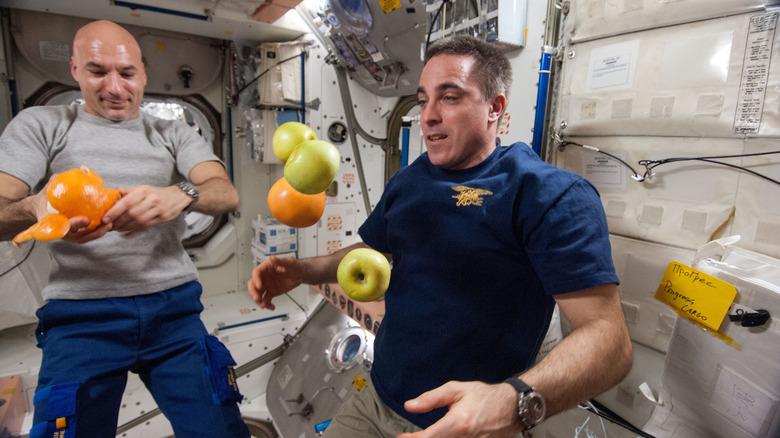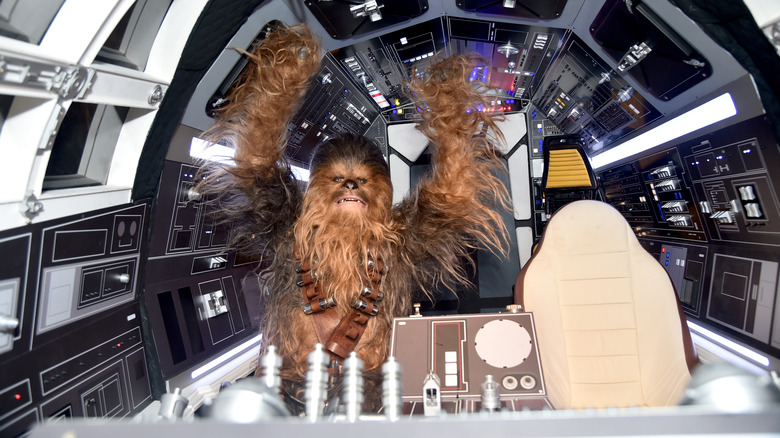The Unfortunate Reality Behind Artificial Gravity
Fans of science fiction take artificial gravity for granted. Whenever you see Han Solo and Chewbacca casually strolling through the Millennium Falcon or the crew on the bridge of the USS Discovery operating their stations, they're all doing so with their feet firmly planted on the ground. Yet, when we see actual images from the International Space Station, all of the actual astronauts are floating around in zero gravity.
What's the deal?
The artificial gravity we see in movies and shows is fiction because we don't have the technology to create it. Gravity is a fundamental law of nature that exists between all objects, according to Space.com. If that sounds like the explanation of the Force from Star Wars, you're not wrong. The force of gravity does, in fact, bind the galaxy together by attracting objects with mass toward each other and is the very thing that keeps us tethered to the ground on Earth and makes it possible for us to breathe.
Other obstacles must be overcome besides not having the available technological know-how to build a contraption that generates gravity — one is the law of physics, and the second is the physical demand it has on the human body.
Never upset a Wookie's artificial gravity
Thanks to Albert Einstein's equivalence principle, which led to his theory of general relativity, an astronaut in an enclosed craft without the proper reference point couldn't tell if the downward force they felt was caused by gravity or because the ship was accelerating in a specific direction. Using Einstein's equations, scientists could create artificial gravity by making the ship spin, but there are only three types of acceleration that can affect gravity: linear, rotational, and gravitational.
According to Forbes, linear acceleration is caused by the uniform thrust of a booster rocket in a straight line, like a typical spaceship launch. Rotational acceleration would occur if the ship's outer hull spun, causing the occupants inside to feel as if they were pushed toward the ship's center. Think Discovery One in "2001: A Space Odyssey." Lastly, the principle of gravitational acceleration states the force made by a gravitational field must be the same as the force created when something accelerates, according to TechTarget. A ship needs to speed up to move through space and slow down once it arrives at its destination. If not equipped with a device that dampens or shields the crew from the incredible gravitational (G) forces associated with those speed changes, their bodies would be wrecked.
None of these things are currently within scientists' ability to generate realistically, so artificial gravity will remain within the realm of science fiction for now.

